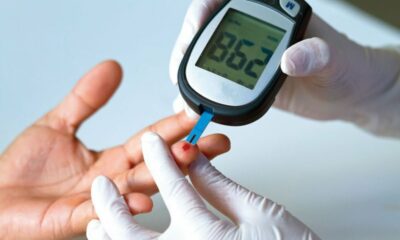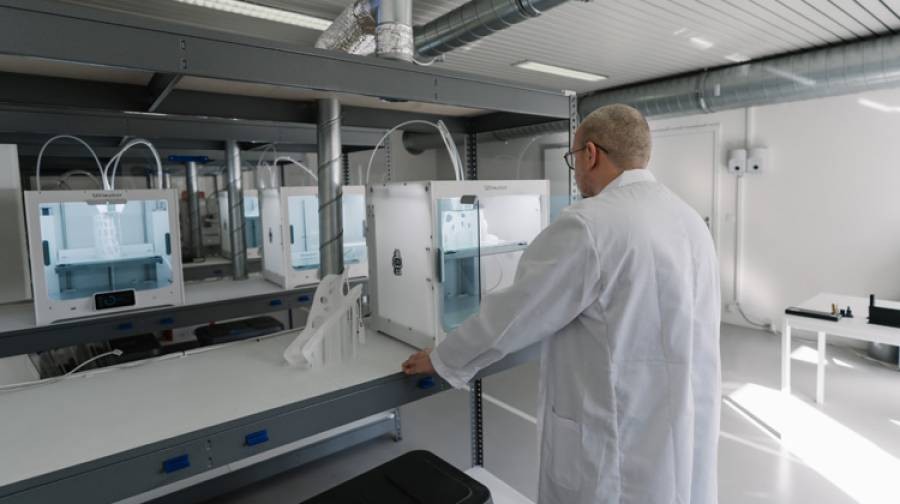It is possible to intentionally activate particular nerves, for example to treat pain. Attaching the necessary electrodes is more challenging the finer the nerves are. Flexible electrodes created using 4D printing technology have recently been created by researchers at the Technical University of Munich (TUM) and NTT Research. They automatically fold and wrap themselves around delicate nerves when they come into contact with dampness. Published in the journal Advanced Materials is the study.
Our movements are controlled by electrical impulses sent by the neurological system. These are sent from nerve cell to nerve cell until, for example, a muscular contraction is brought about. Acutely applied or implanted electrodes can be used to trigger the nerves with current pulses in order to artificially excite nerve cells. For example, peripheral nerve stimulation is used to treat sleep apnea and chronic pain.
Additionally, vagus nerve stimulation has been used in therapeutic settings to treat epilepsy and depression. This nerve has a few millimetres of diameter, which is thick.
In contrast, it is more difficult to stimulate nerves with sizes between tens and hundreds of micrometres. Electrodes that are created with precision and fineness are necessary for these hair-thin nerves. The electrode is more difficult to adhere to the nerves in the micrometre range and more difficult to insert.
Using 4D printing, new shapes are possible.
4D printing entails precisely reshaping 3D-printed items, sometimes with the use of heat or moisture. Now, scientists at the Technical University of Munich and the Medical & Health Informatics (MEI) Lab at NTT Research have created 4D-printed electrodes that, when placed into moist tissue, wrap themselves around incredibly tiny nerve fibres. Utilising 3D printing technology, the electrode is originally created, allowing for flexible change of the shape, diameter, and other properties.
The electrode’s outer sheath is made of a biocompatible hydrogel that expands when it comes in touch with moisture. Although flexible, the interior material does not swell. When exposed to the tissue’s moisture in this condition, the electrodes automatically encircle the nerve fibres.
The electrodes’ internal titanium-gold coating, which is structured, transfers electrical signals to the nerve fibres. “The close contact between the folded cuffs and the nerves allows us to both stimulate the nerves and measure nerve signals with the electrodes,” says Bernhard Wolfrum, Professor of Neuroelectronics at the Munich Institute of Biomedical Engineering (MIBE) at TUM and head of the study.
The variety of potential applications is widened by this.
Better stimulation selectivity
Future prospects for the novel electrodes include numerous biomedical uses. One example is better sleep apnea implants. The tongue temporarily blocks the airway in those with sleep apnea when it dips back towards the throat. The issue can be resolved by activating the muscles that pull the tongue forward.
“Currently, however, selectively stimulating only those muscles that move the tongue forward is difficult. This is where the flexible electrodes might be applied to facilitate stimulating nerves more selectively in the future,” says Professor Clemens Heiser, senior physician at the Department of Otolaryngology at the TUM University Hospital Klinikum rechts der Isar.
Self-folding electrodes are reliable and simple to use. The research team has already used locusts to show how the electrodes can be used: 100 micrometer-diameter fine nerve fibres were sheathed without causing any harm to the nerves. The scientists were able to target the muscles they wanted to stimulate in this way.
The electrodes, albeit still in the early stages of research, may offer a crucial way to use peripheral nerve stimulation in the future for a wider range of clinical applications.

 General Medicine2 weeks ago
General Medicine2 weeks ago
 Diabetology2 weeks ago
Diabetology2 weeks ago
 Diabetology2 weeks ago
Diabetology2 weeks ago
 General Medicine2 weeks ago
General Medicine2 weeks ago
 Diabetology6 days ago
Diabetology6 days ago
 Diabetology6 days ago
Diabetology6 days ago
 Diabetology4 days ago
Diabetology4 days ago
 Diabetology4 days ago
Diabetology4 days ago




